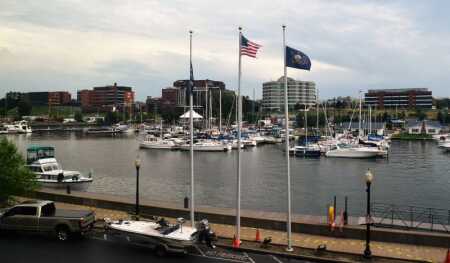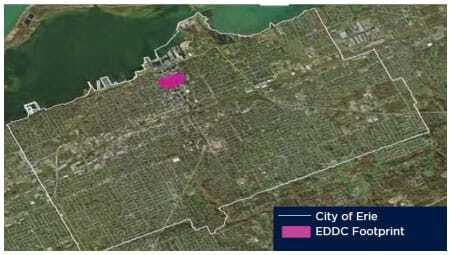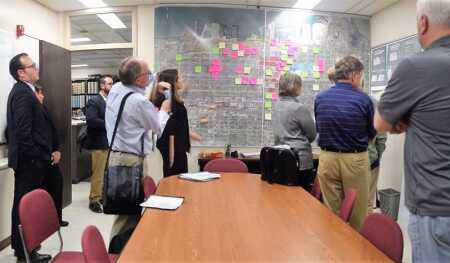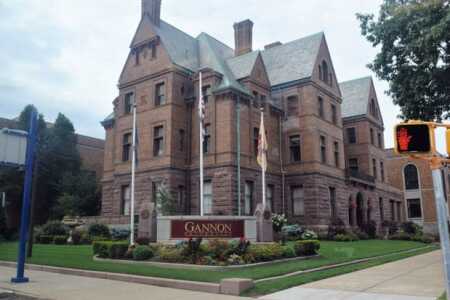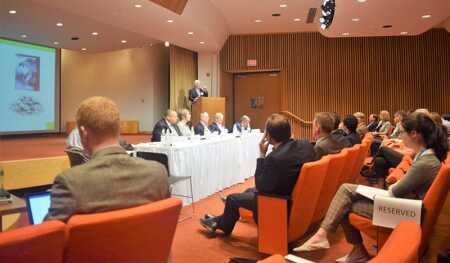Since 1960, the Great Lakes port city of Erie, Pennsylvania, has lost roughly 30 percent of its population (now at about 97,000). Manufacturing jobs have been cut from about 40,000 to 24,000 since the 1970s, and the city has a poverty rate that is close to double the national average. A ULI Advisory Services panel spent a week in August touring Erie’s neighborhoods and development projects.
The 11-person panel—chaired by ULI Trustee Richard Reynolds, president of a real estate consulting firm in Boston—focused on Erie’s downtown revitalization and working within the city’s current economic and cultural environment. In this case, the panel considered how to capitalize on the city’s existing landscape while also figuring out how to add new developments into the framework.
Erie Mayor Joe Schember told ULI after the presentation that “a lot of what they told us will accelerate what we want to accomplish. . . . It will help us become what we should be and want to be, and not trying to be what you are not.”
Erie is home to the 3,112-acre (1,300 ha) Presque Isle State Park, a sandy peninsula that juts into Lake Erie just north of the downtown area, offering swimming, hiking, and other outdoor activities. There also are about 16,000 students attending four universities in the immediate area.
The city has become a center for advanced manufacturing (plastics), medical service research, and cybersecurity innovation, all of which have downtown, central location connections, according to city research. While it has had a loss of about 3,000 manufacturing jobs in the last three years, Erie has added some 800 jobs in these other areas.
On the other side of the coin, the highest poverty levels are located in or around downtown Erie. According to the U.S. Census Bureau, three of the top five census tracts with the highest poverty are in the center of the city or just to the east. “I think what ULI is telling us in terms of housing is that we have to put a stake in the ground and work our way around it with good results for all groups,” says Timothy NeCastro, president and CEO of Erie Insurance, one of the sponsors of the ULI study.
The ULI panel emphasized two important goals for Erie. The first is to consolidate the city and move more housing and retail into the downtown area. The second is to reform some blocks of the center city around Perry Park, and use that center point to launch a better connection between the central city and the lakefront.
Because the center city comprises an abundance of surface parking lots and other empty lots, the panel suggested there was both room for and a market to cater to downtown living and retail. The panel said that between 630 and 715 new, market-rate residential units can be built, and they can include a cross section of different styles based on age and income. This housing should include ground-floor retail and commercial space (120,000 to 200,000 square feet [11,100 to 18,600 sq m]), they suggested.
About 2,085 to 2,230 parking spaces would be needed to accommodate that growth. One way to disguise them is to build the parking at the center of the block development, with the new housing and retail abutting the sidewalk on the exterior.
The second big change to the downtown area is to make the connection to the lakefront a bit easier. Perry Square sits at the city center and is bisected by State Street. The ULI panel suggested closing State Street to car traffic, and then starting a tram or streetcar that can run on State Street to the waterfront. A better and shorter connection between the mainland and Presque Isle State Park would be good to pursue, Reynolds said.
An ice-skating rink could be a part of that Perry Park redevelopment in the center of downtown. “The buildout in blocks from Perry Park to the lakefront can be a key component of making the housing and the retail work together and attract more people to the city center,” said Daniel Anderton, a panel member and community designer and planner from Rockville, Maryland.
ULI’s work was funded by the Erie Downtown Development Corp. (EDDC), the city of Erie, Erie Insurance, the Jefferson Educational Society, and the Erie Community Foundation.
In the end, Erie has to decide where it wants to go, said Nan Rohrer, ULI panel member and president at the Midtown Community Benefits District in the Baltimore area.
“Every city has to right-size itself at some point, and there is no easy or certain way to do that,” Rohrer said. “You have to identify growth sectors and opportunity, and I think Erie has the drive to do those things.”
But again, affordable housing is a key focus. “Poverty is an obvious concern for our community. It’s also a big concern with such a high concentration of poverty in our central business district,” said John Buchna, executive director of the Erie Downtown Partnership in an interview last year. “We have got to find ways to lessen it and improve conditions so it a success for all.”
Panel member Stephen Leeper emphasized to the 150 people in the auditorium that “starting off with change needs patience, and that is often hard to do.”
Leeper was appointed president and CEO of Cincinnati Center City Development Corporation (3CDC) in 2004, and he leads 3CDC’s efforts to revitalize Cincinnati’s Over-the-Rhine (OTR) neighborhood. He has managed an investment of $1.3 billion in downtown Cincinnati and the OTR area. He met with Erie representatives last year to help them in their transitory planning.
“When we first started, we were not ready for prime time,” Leeper said to the crowd in Erie of his experiences in Cincinnati. “There was too much to do, and sometimes we had project management nightmares and at the same time, not being able to communicate well with the neighborhood either.
“But in the end, we were able to figure out both how to create good places people wanted to live, do that without excluding people because of income, and making it so that redesigned parks became places that defined neighborhoods,” he said.
John Persinger, chief executive officer of the EDDC, a privately funded nonprofit organization led by a group of business and community leaders, said that ULI’s findings “provide a good diagnosis of where we are and where we need to go.
“You heard everyone say today we’re at a tipping point in the city,” he continued. “Everyone knows we’ve been in decline for 60 years. This report provides some great recommendations of how we tip forward so we get out of this decline and get the city growing.”
Are you a member interested in serving on the next Advisory Services panel? Apply today at navigator.uli.org. The Erie, Pa., report and others are available to ULI members in Knowledge Finder.

